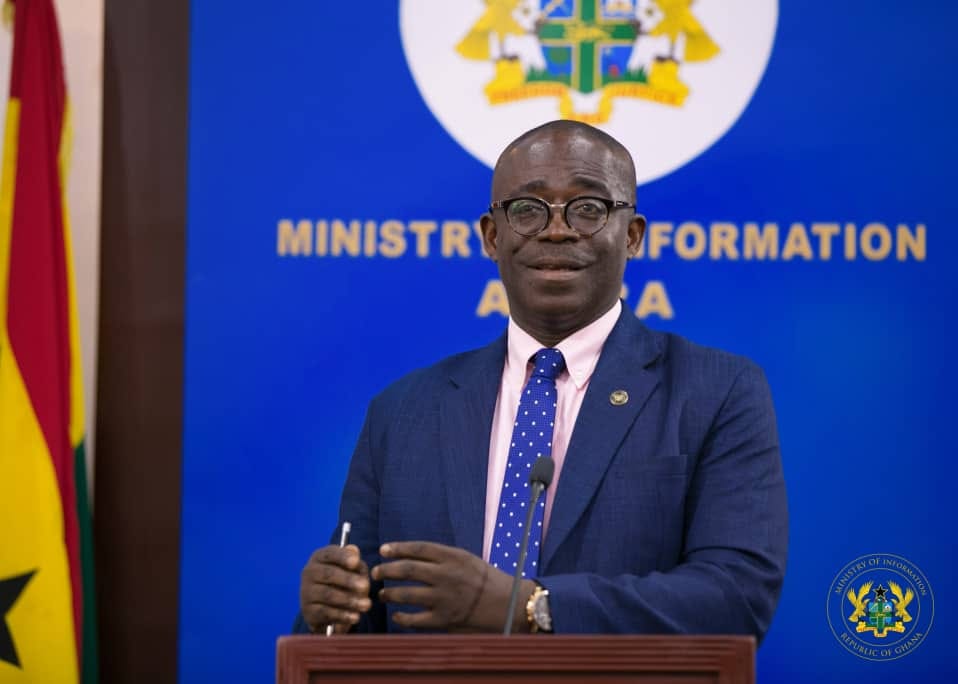
Govt pays GH¢16.45bn to power producers — Deputy Minister of Energy
The government paid GH¢16.45 billion to independent power producers (IPPs) and fuel suppliers from 2016 to June 2021.
While the IPPs received GH¢12.07 billion, fuel suppliers were paid GH¢4.36 billion.
Advertisement
The payment was done on behalf of the Electricity Company of Ghana (ECG), the offtaker of power from the IPPs.
A Deputy Minister of Energy, Mr William Owuraku Aidoo, disclosed this on the floor of Parliament yesterday.
It was in response to a question by the Majority Chief Whip, Mr Frank Annoh-Dompreh, who is also the Member of Parliament (MP) for Nsawam-Adoagyiri.
The MP asked how much money the government had paid to IPPs in the past eight years, the breakdowns and the periods involved.
Breakdowns
Giving a breakdown of the money paid, Mr Aidoo said the government paid the IPPs GH¢343.2 million in 2016, GH¢1.07 billion in 2017 and GH¢1.97 billion in 2018.
The rest were GH¢2.75 billion in 2019, GH¢4.32 billion in 2020 and GH¢1.61 billion as of the second quarter of 2021.
For payments to fuel suppliers, the deputy energy minister said the government paid GH¢1.84 billion in 2019, GH¢1.59 billion in 2020 and GH¢928.39 million as of the second quarter of 2021.
When the Deputy Minority Leader, Mr James Klutse Avedzi, asked him to disclose the source of the funds used to pay the two entities, the minister said: “Quite honestly, I cannot stand here before this august House and give you a definite answer.”
“Suffice it to say that government’s payments, usually, come from the Consolidated Fund,” he said, adding that the payments did not originate from the Ministry of Energy.
The National Democratic Congress (NDC) MP for South Dayi, Mr Rockson-Nelson Dafeamekpor, also sought to know how much had been paid for the remainder of 2021 to both IPPs and fuel suppliers, but the minister stated that “the date that was available to us when we enquired from the Ministry of Finance is what we have brought to the House.”
He said any further questions on the source of the money should be directed to the Ministry of Finance.
Pwalugu multipurpose dam
The deputy minister was also asked to respond to a question on the significance of the Pwalugu Multipurpose Irrigation Dam project to the people of the Upper East Region and the status of work done since Parliament gave its approval in 2020.
Responding, Mr Aidoo said the Pwalugu dam had two main components — power generation and irrigation — being jointly implemented by the Ministry of Energy and the Ministry of Food and Agriculture.
The hydropower component, he said, was being managed by the Ministry of Energy, whereas the irrigation component was by MoFA.
The deputy minister said the project would provide enormous benefits for the people of the Upper East and the Northern regions, key among them being flood mitigation, especially after the spillage of the Bagre Dam which caused heavy flooding in the Upper East and the North East regions and resulted in damage to properties and loss of lives.
“Information from the National Disaster Management Organisation indicates that about 69,468 people were affected, with 19 deaths, as well as about 27,902 acres of farms affected.
“The Pwalugu multipurpose dam, when constructed, will provide a permanent solution for the problem and support the government’s flagship programmes such as Planting for Food and Jobs,” he stated.
Rural electricity connections
The NDC MP for Builsa South, Dr Clement A. Apaak, also sought to know when communities in Builsa South, such as Nyansa, Vundema, Kalasa, Bachingsa, Wupiensa, Doninga, Bachingsa-Nyanbisa and Gbedema Zeng would be connected to the national electricity grid under the National Electrification Scheme (SHEP4/5).
Responding, Mr Aidoo said the communities formed part of the Ministry of Energy’s ongoing SHEP-4 rural electrification programme in the Builsa South District in the Upper East Region.
He said 248 high voltage (HV) poles required for the communities had been delivered to site.
“Conductor stringing of the HV network has been completed at Vundema and Doninga. The full complement of pole-top accessories to allow for the execution of the installation works is yet to be supplied to the remaining communities,” he said.
He also said 159 low voltage (LV) poles required for the communities had been supplied and planted at site, while conductor stringing of the LV network had been completed at Bachingsa.
The remaining communities, the deputy minister added, were yet to receive the full complement of pole-top accessories to commence installation works.
“The delay in the execution of the electrification project in the communities is as a result of shortage of some key materials/equipment, including stay equipment, conductors, transformers, meters, etc.
“The ministry has taken delivery of some of the materials/equipment and will arrange for the release of same for installation works to resume at site, and we expect to complete the installation works in the above-mentioned communities by end of the year,” he said.



